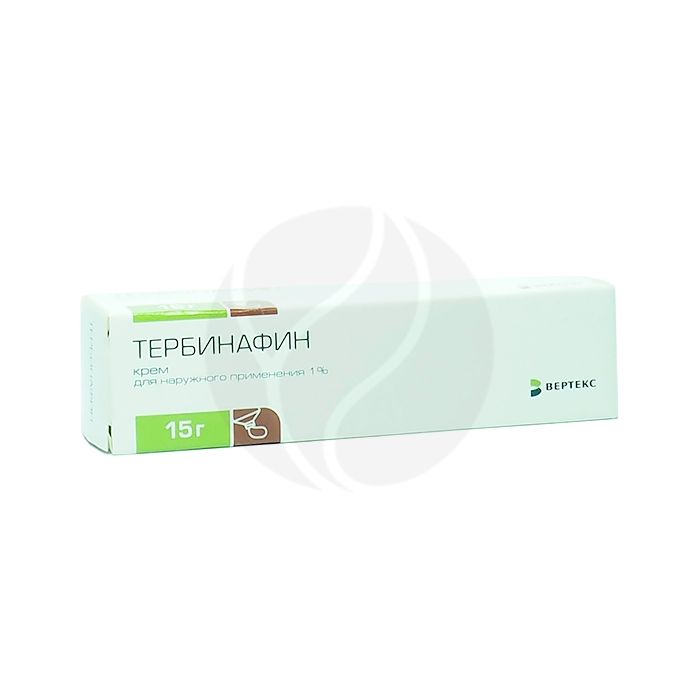Terbinafine cream 1%, 15 g
Expiration Date: 05/2027
Russian Pharmacy name:
Тербинафин крем 1%, 15 г
Fungal skin lesions caused by dermatophytes, candidiasis;
versicolor versicolor.
Outwardly.
Adults and children from 12 years old
Before applying the cream, it is necessary to clean and dry the affected areas. The cream is applied once or twice a day with a thin layer on the affected skin and adjacent areas and rubbed lightly. For infections accompanied by diaper rash (under the mammary glands, in the interdigital spaces, between the buttocks, in the groin area), the places where the cream is applied can be covered with gauze, especially at night. In case of extensive fungal infections of the body, it is recommended to apply the cream in tubes of 30 g.
Average duration of treatment: dermatomycosis of the trunk, legs - 1 week, once a day; dermatomycosis of the feet - 1 week, 1 time per day; candidiasis of the skin - 1-2 weeks 1 or 2 times a day; tinea versicolor: 2 weeks 1 or 2 times a day.
A decrease in the severity of clinical manifestations is usually noted in the first days of treatment. In the case of irregular treatment or premature termination of it, there is a risk of re-infection. If after one to two weeks of treatment there are no signs of improvement, the diagnosis should be verified.
The dosage regimen of the drug in the elderly does not differ from the above.
It is not recommended to use this drug in children under 12 years of age.
Cream for external use 1% white, homogeneous, with a weak characteristic odor.
1 g
terbinafine hydrochloride 10 mg
Excipients: benzyl alcohol, polysorbate 60 (tween 60), sorbitan monostearate, cetyl alcohol, isopropyl myristate, cetyl palmitate, sodium hydroxide, purified water.
Hypersensitivity to terbinafine or to any of the inactive ingredients that make up the drug.
With care: hepatic and / or renal failure, alcoholism, inhibition of bone marrow hematopoiesis, tumors, metabolic diseases, occlusive vascular disease of the extremities, children under 12 years of age (lack of sufficient clinical experience).
pharmachologic effect
Antifungal agent of the allylamine group. It acts by inhibiting squalene epoxidase in the cell membrane of the fungus. This leads to a deficiency of ergosterol and intracellular accumulation of squalene, which causes cell death of the pathogen. Has a fungicidal effect on dermatophytes, molds and some dimorphic fungi, yeast and yeast-like fungi. It can act fungistatically on some types of yeast. Active against pathogens of dermatomycosis (Trichophyton / including Trichophyton rubrum, Trichophyton mentagrophytes, Trichophyton tonsurans, Trichophyton verrucosum, Trichophyton violaceum /, also Microsporum canis and Epidermophyton floccosum); yeast-like fungi of the genus Candida (mainly Candida albicans); the causative agent of multi-colored lichen (Malassezia furfur).
Application during pregnancy and lactation
In experimental studies, no teratogenic properties of terbinafine have been identified. The use of the drug during pregnancy is possible in cases where the intended benefit to the mother outweighs the possible risk to the fetus. Terbinafine is excreted in breast milk. If it is necessary to use the drug during lactation, the issue of stopping breastfeeding should be resolved.
Side effects
For external use: itching and burning of the skin, hyperemia at the site of application, allergic reactions are possible.
Interaction
No drug interactions are known for terbinafine ointment / cream.

